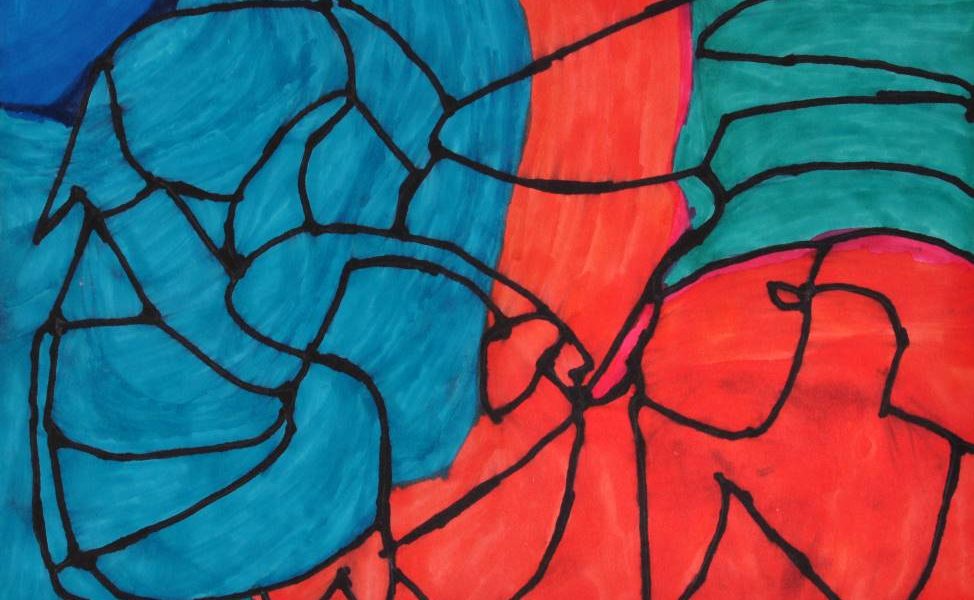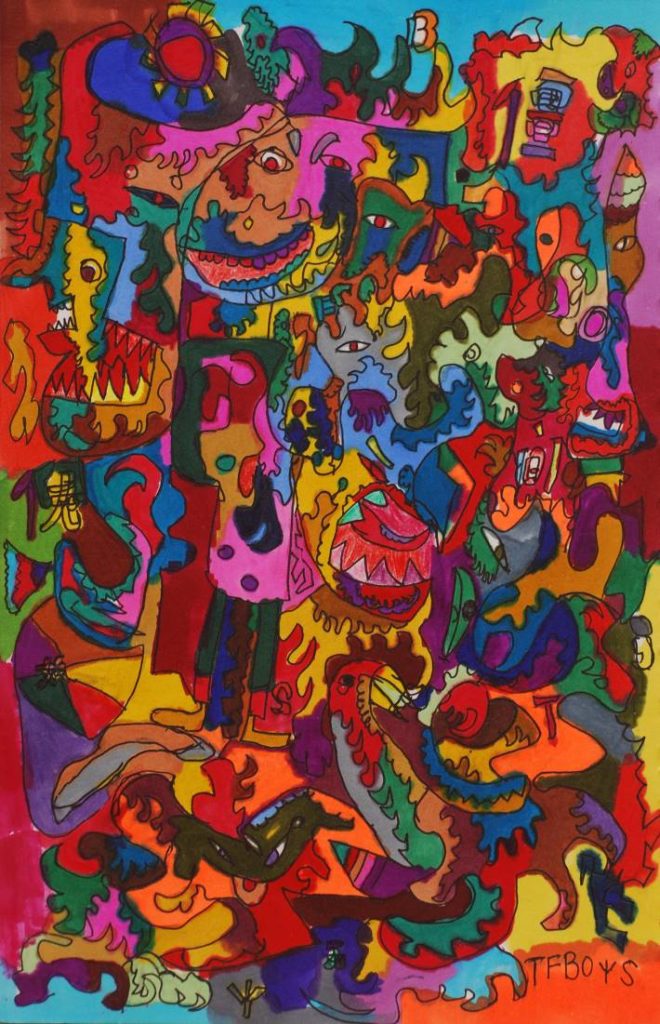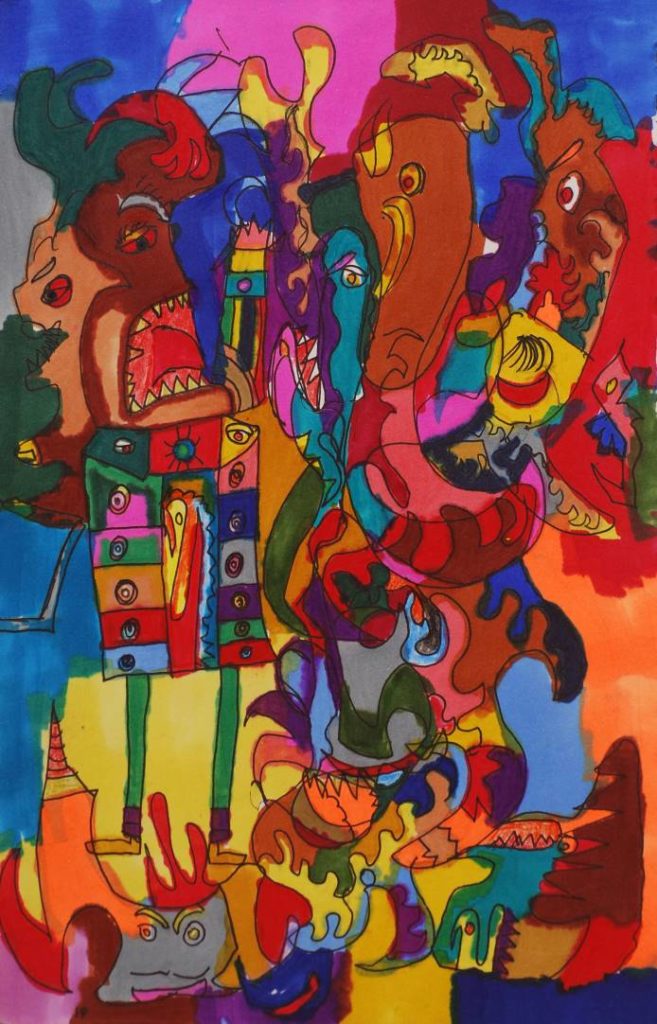Special edition: Outsider Art in China (2)
This is a special edition featuring an interview with Guo Haipin, the pioneer and leading figure of outsider art in China. The edition is introduced by Shaun McNiff and it includes a response by Daniel Wojcik, author of Outsider Art: Visionary Worlds and Trauma.
- Creating Lives through Art – An Introduction to Outsider Art in China with Reflections on Outsider Art: Visionary Worlds and Trauma by Daniel Wojcik. By Shaun McNiff.
- Outsider Art in China — An Interview with Guo Haiping. By Chen Shushan.
- A Dialogue with Daniel Wojcik on “Grassroots” Artistic Expression and Its Redemptive Power. By Shaun McNiff
Outsider Art in China — An Interview with Guo Haiping
原生艺术在中国-对话郭海平
Chen Shushan, Nanjing Outside Arts Studio
Chen Shushan: Can you tell our readers about your personal history and how you became involved with art, psychology, mental health, and art therapy?
Guo Haiping: I was born in Nanjing in 1962. This year marked the end of China’s three years of natural disasters, during which 37.5 million people starved to death according to the official figures. I probably would not have survived had I been born one or two years earlier. When I was four years old, China began the decade of “Cultural Revolution,” the so-called “ten years of catastrophe.” Mao Zedong, a figure of almost godlike importance in that era, encouraged people to rebel. His Selected Works was the most frequently read text during my primary and middle school years, and the slogan “Do not forget the class struggle” was painted in all the streets. In 1979, I dropped out of school before graduation and became a factory worker. In retrospect, I cannot say with certainty whether my dropping out was a manifestation of a rebellious spirit. I did begin to feel an unprecedented irritability within two years. At this time, I met several young artists. Despite the fact that I had never heard of the concept of “art,” I was attracted at first sight. Soon I followed them in making sketches and paintings, and began to read books introducing me to Van Gogh, Gauguin and several other artists— one of them was Van Gogh’s diary, Lust for Life.
I saw how great changes can take place within those who devote themselves to art. I was inspired and became pretty overwhelmed by the excitement. Within two years, I planned to resign from the factory and become a freelance artist. Forty years ago in China, choosing to become a freelance artist could be life threatening in that only state-owned units could make money. Firmly against my parents’ wishes, I tried to flee the country but failed. However, the longing for freedom became even more intense. While trying to relieve the existential burden, I accidentally turned to psychology, which was rarely read in the 1980’s. Abnormal psychology was not included as a subject in the university nor was it used to understand people in what were called lunatic asylums. I could rely on no one but myself to achieve self-salvation and understanding by studying on my own.
In 1989, the head of the Communist Youth League in Nanjing learned about psychological counseling in Hong Kong and planned to provide this service to young people in Nanjing but could not find qualified people in Nanjing’s universities and the asylum. He accidently read my articles in the Nanjing Daily concerning psychological issues. I was working then as a graphic designer in a printing factory. The head of the League made an appointment with me and persuaded me to do psychological counseling work. He had originally planned to first do a market study to assess the need but he was overwhelmed by the responses from the young people searching for psychological support and help. I guess the need was clear. With his help I left the printing factory and became engaged with the Nanjing Youth Psychological Counseling Service Center which was then established. Since I was primarily interested in the relationship between art and psychology, an art department was set up in the center. I could not find any art therapy books and information at that time, and I encountered many difficulties during the process of self-study. I left the service center after four years, and it went out of existence two years later. I was exposed to the broad spectrum of mental illness during the four years and I explored the role of art in dealing with psychological problems.
Chen Shushan: You said that you have been devoted to promoting the development of outsider art. Our readers are very curious about the reasons?
Guo Haiping: After leaving the Psychological Counseling Center, I started running a cafe with my wife catering to pioneering artists and where a number of experimental art activities were held. Public interaction and the role that art played in relation to people and society were emphasized. However, these activities failed to live up to my expectations. Six years later, I transferred the cafe to another artist and decided to become a freelance artist. In 2005, I was the curator of an exhibition named “Sickness” in Nanjing’s Art Gallery. I was convinced that the occurrence of a variety of psychological problems was related to the condition of our social environment. During the exhibition, it occurred to me that I could start learning about art works made by patients with mental illness in asylums and I shared my idea with a patron. Unexpectedly, he agreed to sponsor me and expressed his willingness to help me to find a mental hospital for further cooperation in Nanjing. On October 10th, 2006, I began three months of exploration and practice in Nanjing Zutangshan Mental Hospital.
Chen Shushan: Can you describe the art works that you first saw in the mental hospital that had an impact on you?
Guo Haiping: The paintings made by a peasant named Wang Jun (b. 1957 in Nanjing) impressed me most. When I first saw Three Mountains I did not understand it. He told me that it was an image of three mountains near his house but I still could not see this. When I continued to inquire about the picture, he told me that he painted it as bird’s-eye view, just like the perspective of a map. I asked if he had ever flown in a plane? He said. “No,” and then I felt that he was perhaps expressing an out-of-body experience. His perceptions like other outsider artists within mental health settings are very free and flexible. In addition to the bird’s-eye perspectives they also include what are called X-ray views that look inside objects. This appears in his other works; for example, in his painting Tractor, he combined different perspectives in one work. Then I found that many other works painted by patients used the same methods. Two or three years later I discovered how these ways of painting are present in the works of indigenous artists, especially in the art of Australian aborigines. Also, these free and flexible views often appear in the ancient images that our ancestors created, and this suggested to me that the ways of perceiving the world sometimes attribute to mental illness are manifestations of what we might call psychic or artistic atavism.

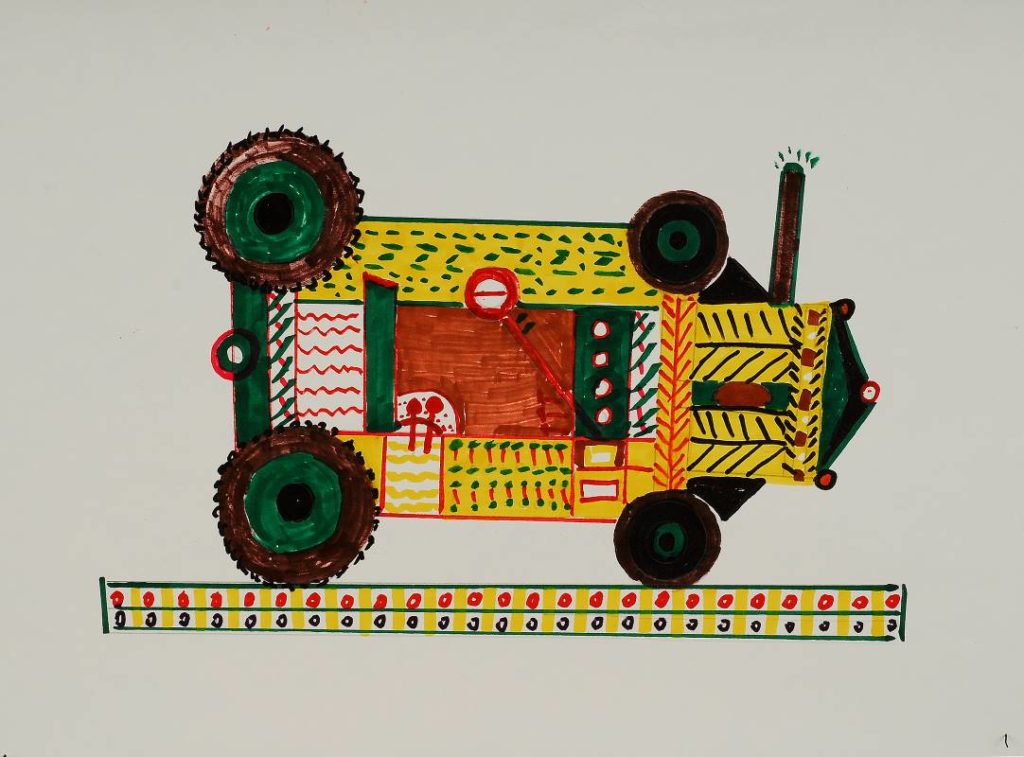
Wang Jun: Tractor, marker pen on paper/52 x 38 cm
Chen Shushan: You mentioned that outsider art also includes the work of artists without mental disorders. Can you elaborate on this point?
Guo Haiping: We should be clear about definitions of both outsider art and mental disorders before answering this question. The two are different and should not be confused with one another. Outsider art not only reflects the spirit of humanity, but also the expression of the divine and Nature. Illness is not an advantage for artists creating within mental health institutions. As I have said, outsider art also includes the work of artists without mental disorders. Therefore, the outsider artist is not restricted to a certain group of people or culture system and constraints. This would devalue the artistic expression and replace it with conceptual explanations and stereotypic ideas. I encourage approaching the art for what it is – as a manifestation of the human spirit without the constraints of concepts. I long to simply experience and feel its expression, its presence, and the impact it has on me and others who reflect on it.
Chen Shushan: Are you familiar with the outsider art research around the globe? Do you see similarities and differences in relation to Chinese outsider art?
Guo Haiping: In 2014, I published a book Notes of Outsider Art in China where I reflect on these issues. I have continued to gain insight into these questions during the past few years. We are currently discussing an exhibition of work in China with Thomas Röske, curator of the Prinzhorn Museum at the University of Heidelberg.
I see significant differences in how the people in China and Europe respond to outsider art. In the past two thousand years, China’s culture could be defined as secular and systematic. This culture has been deeply rooted in the spirit of Chinese people. It is mainly reflected in the worship and dependence on secular power. Once deprived of power, people tend to feel a sense of insecurity and even horror. The power of the supernatural have been demonized since ancient times in China. The mythological emperor Zhuanxu cut off passage between heaven and earth to reinforce social hierarchy and control, and thus people tend to approach this area with a high degree of vigilance and maintain a “safe” distance. To the extent that outsider art is viewed as a manifestation of these forces, this becomes an obstacle to engagement. People in Europe, perhaps shaped by artistic movements from the Renaissance to romanticism, surrealism, expressionism, tend to open their arms to various forms of art. Thus the major difference between people in China and Europe involves public acceptance of outsider art.
As for the similarities, the basic characteristics of the outsider art spirit are highly consistent after careful observation. Putting aside the origin of country and people, the similarities include the natural movement of the artists’ gestures, the use of color, the methods of perspective I mentioned, the basic desire for expression, aspirations for life, to name just a few. These similarities suggest that outsider art is not only beyond the boundaries of country and nationality, but also time and space. I believe that this art language should be understood by all human beings. It is a shared expression that can shatter various cultural obstacles with common understanding.
If we compare the contemporary outsider art of China and Europe, we might find differences in the degree of performance, the making and showing of this art, and the extent to which possibilities for the full realization of potential exist in the respective societies. For example, the performance of European works may be fully demonstrated, while Chinese works are faced with more obstacles in realizing their promise. Despite these restrictions more and more Chinese people are appreciating possibilities for the future development of outsider art, and perhaps we can contribute new ideas that are currently beyond the understanding of European counterparts. In this sense, even though the outsider artworks share universal qualities there are also influences from a region’s particular cultural ecology and history.
Chen Shushan: Since the establishment of your Nanjing Outsider Art Studio ten years ago, the work has been done both within mental health institutions and local communities. How have the practices been similar and different?
Guo Haiping: China’s mental health institutions are operated within a comparatively closed system. If hospitalized, the patient can only be discharged from the hospital under the guardianship of family members. Most of the guardians feel reluctant to take the patients out of the hospital, even after rehabilitation, because there are many social problems in relation to acceptance, marriage, employment, and public contact in general. And if the emotional problems become active again, there is a lack of community health care services. And of course due to long-term isolation, many patients suffer chronic deficiencies and impairments in both their mental and physical functioning and this can impair their expression. Good mental and physical conditions and the freedom provided by the art studio enable the patients to be more fully expressive.
Since the works are created in a closed environment, they are rarely subject to external interference. In this regard they demonstrate authentic spiritual and visionary states. The art gives the public an opportunity to appreciate and understand the experience and expressions of people living in hospitals. It offers evidence of their humanity and creative imagination. The connections are emotional, sensory, and direct and not dependent on language or explanation. The art can in this way make people everywhere more aware of the creative and vital dimensions of life.
The studios located in the community are quite different. The artists tend to have recovered in significant ways as compared to those who are isolated in mental hospitals. These more effective ways of expressing themselves are perhaps reflected in their art works. With their spiritual strengths enhanced in this way, these artists could become more demanding and active in relation to their communities. However, the society fails to provide proper facilities and services to meet their needs; there is an assumption that these artists should keep silent while isolated in the hospitals and houses within local communities. Therefore, addressing these problems is a long-term and complex social project. We are working to provide a suitable cultural and ecological environment for these outsider artists by establishing a semi-enclosed community as a transitional space. The studio setting offers structure and support but also encourages contact with the surrounding community.
Chen Shushan: Why was this studio project offered in the community instead of a mental hospital?
Guo Haiping: In 2006, when we started negotiating with the mental hospital on this issue, the hospital was unable to understand the importance of the project. And it took ten months of communication to reach agreement. Although the hospital staff did ultimately realize the significance of the project, they were still reluctant to pioneer a controversial social experiment that would publicly talk about what were then sensitive social issues regarding mental health. It was necessary to transfer the project into the community. Seven or eight years later the hospitals became interested in establishing art studios. However, by this time the projects had been extensively offered in various communities and we did not have enough resources to expand them.
These changes in attitude were mainly aimed at solving problems of hospital discharge which were connected to the limited number of hospital vacancies which was a shared problem throughout China. The hospitals hoped to establish channels for patients to return to the community. Compared to a decade ago, the government had been accepting this concept step by step but the pubic was not ready to embrace the patients. The outsider art project is making an aesthetic contribution to helping
Chen Shushan: Can you introduce and show some artworks of your studio?
society understand and accept people with mental health challenges.
His paintings remind us of totem patterns and take us into a spiritual world where
Guo Haiping: Yang Min (b. 1982, Nanjing) is living with severe chronic mental illness.
His paintings remind us of totem patterns and take us into a spiritual world where everything has a soul, such as his paintings Mythical Creature of Leaf and Mountains in which nature and humans are integrated harmoniously. Most of his works were painted in the first two years in our studio and now that his mental state has become more and more stable, his delusions and artistic inspirations become less and less. I believe that the artworks have helped to heal Yang Min and they have perhaps fulfilled their role. His symptoms can be considered from a naturalistic perspective as active responses to life. They are protective mechanisms that set off alarms that stimulate the saving of life. There is a loss of the art but his condition has improved.


Li Jie (b. 1975, Nanjing) is another artist suffering from mental illness and constant delusions. Before coming to our studio she controlled her thoughts mainly by medicines, not medications, and after becoming involved with the studio she started to paint the delusions. Painting makes her peaceful and she found a new way to control the disturbing thoughts. The paintings also offer insights into the nature of her delusions and how she perceived them.


Yi Fan (b. 1985, Nanjing) was born with a cognitive disturbance. Her paintings are the reflections of her feelings and experiences, not copies of objects. Her art offers people an opportunity to easily experience her imagination and expression.

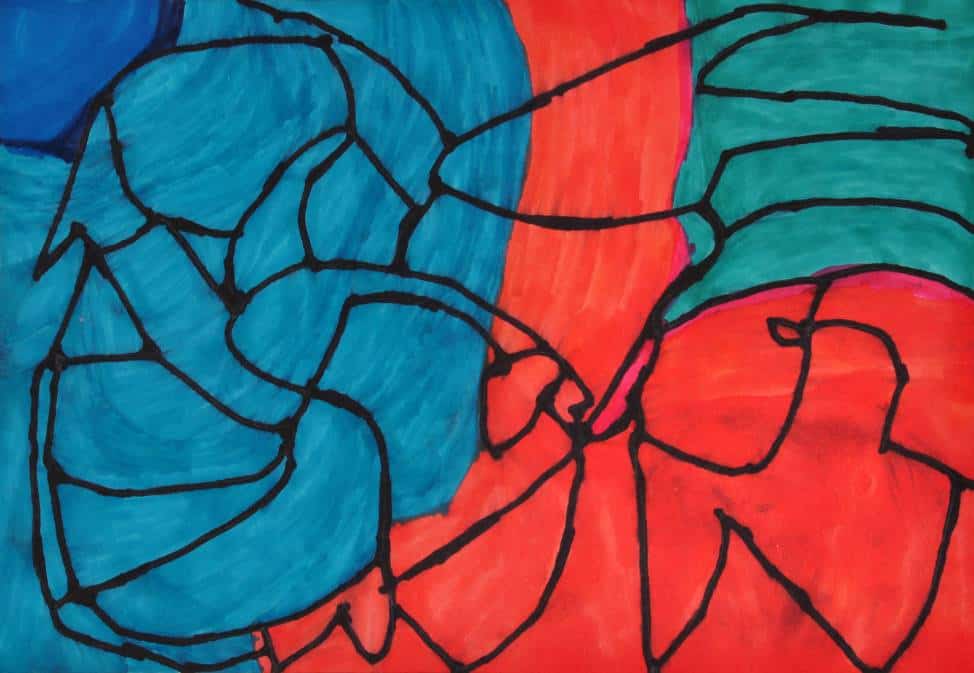
Chen Baogui (b1987, Nanjing) is an epilepsy sufferer. The mental disorder results in heavy memory impairment which separates him from normal daily life so he devotes himself to reading the Bible and communicating with God. After coming to our studio, he started to communicate with God by painting, which can involve his life more fully then just reading Bible. This also helps him to have more contact with daily life.
|
|
|
|
Qiao Yulong (b. 2000, Nanjing) had a trauma at birth to the left side of the brain, so he relates to life and paints mainly with his right brain. He loves music and it is woven into his paintings.
|
|
|
|
Other selected art works:
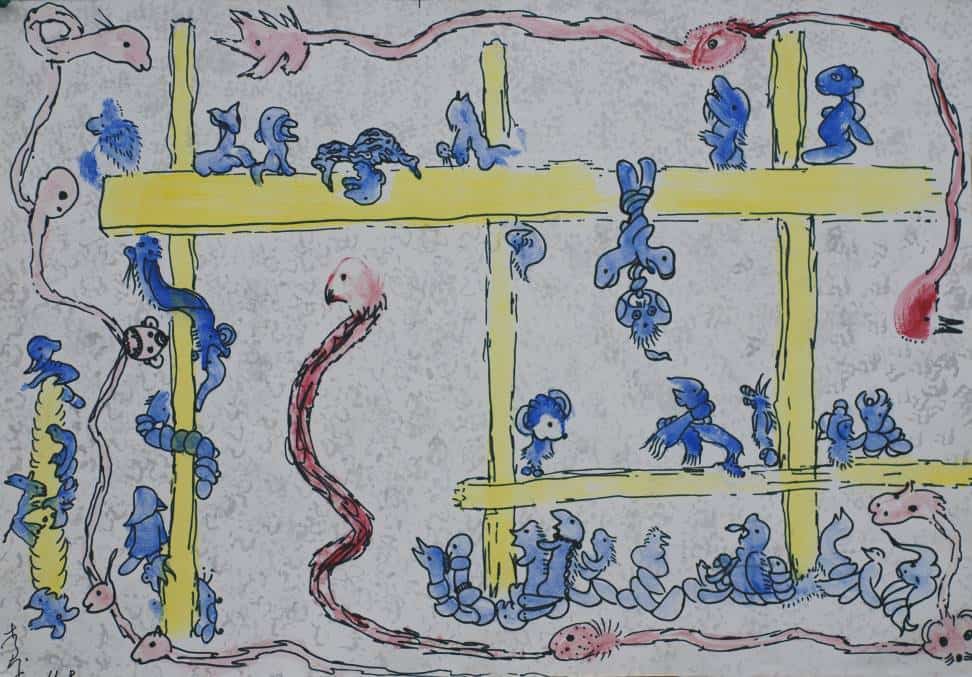
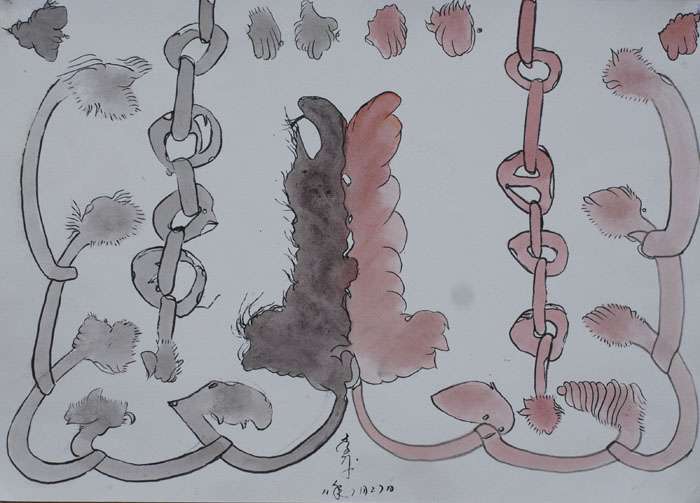
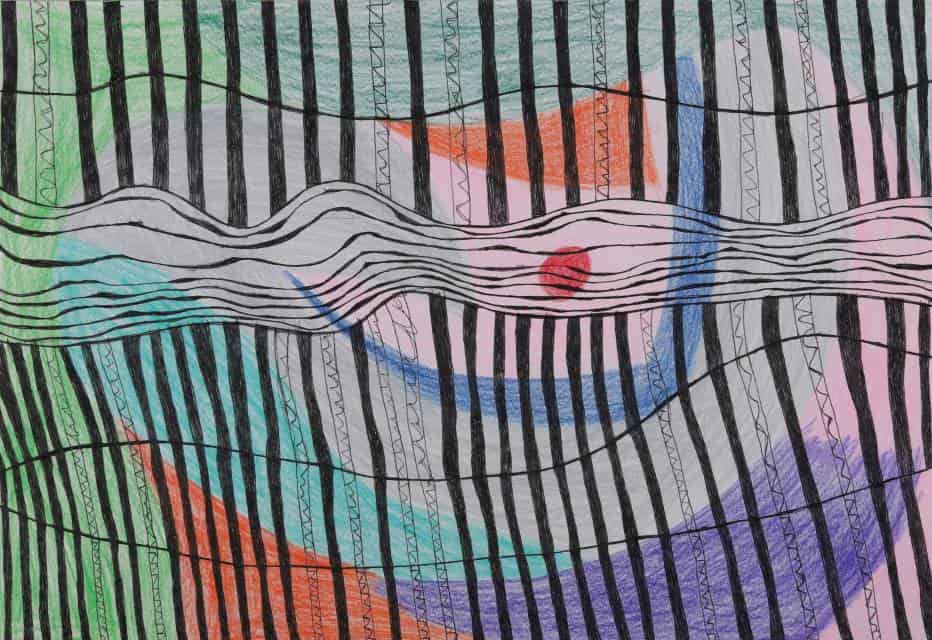
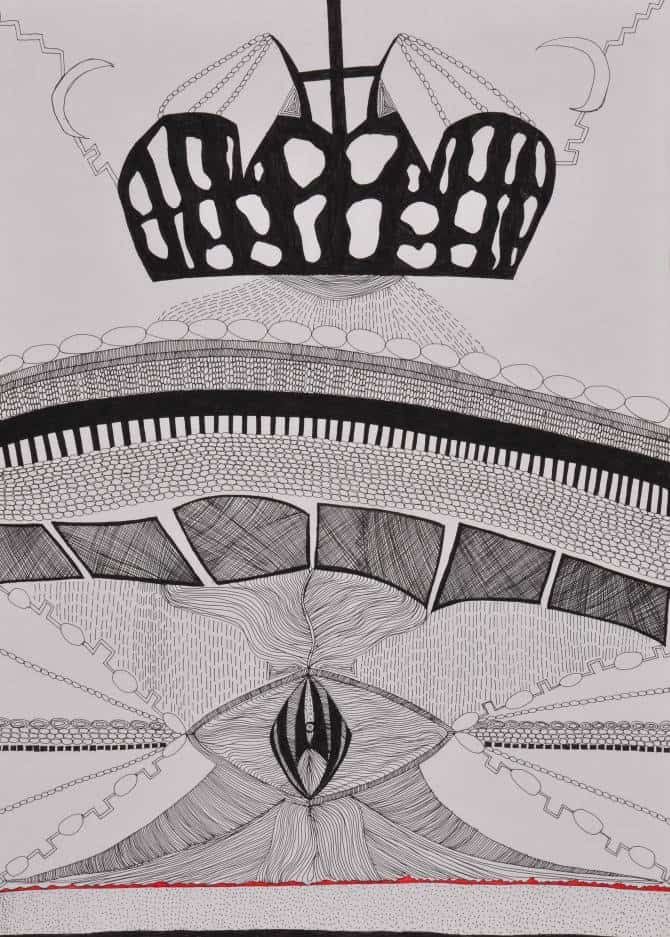
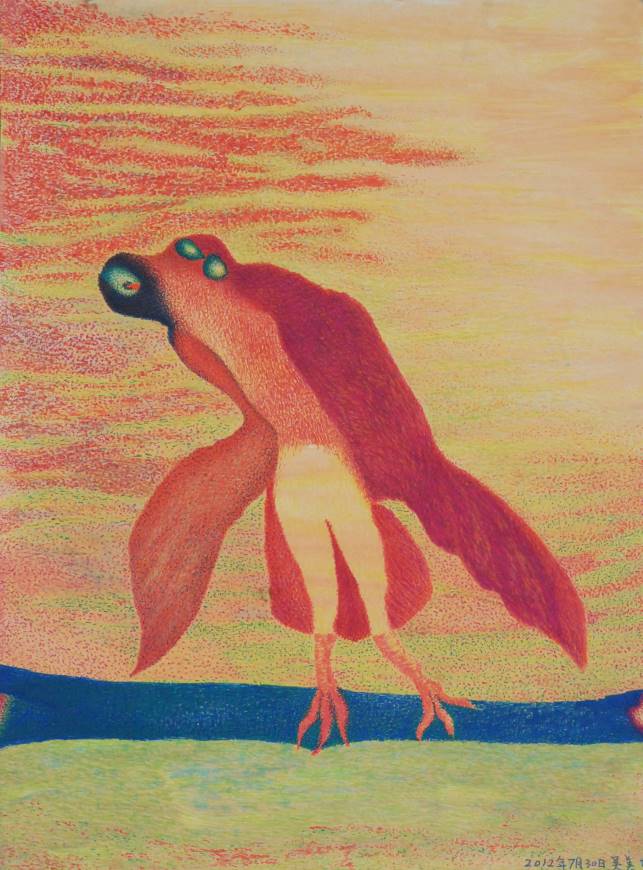
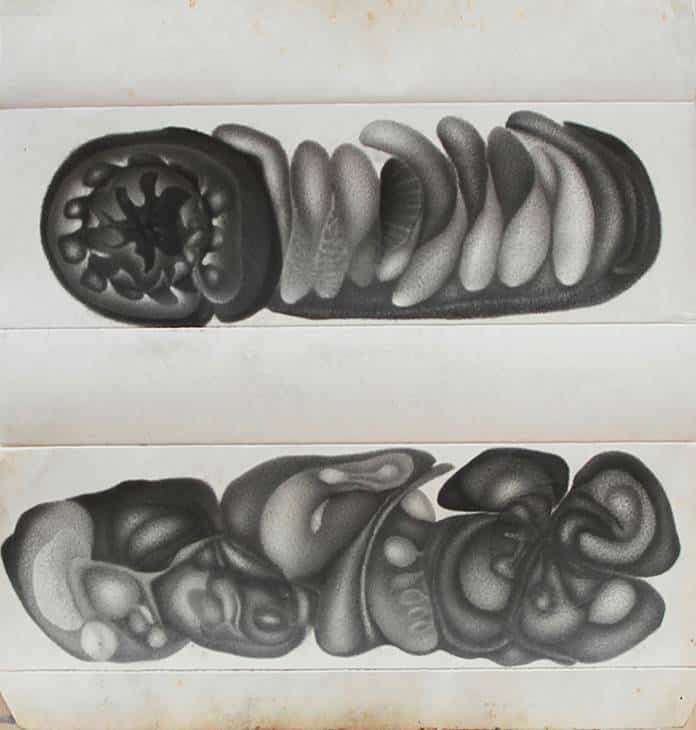
Chen Shushan: Have you changed your thoughts about outsider art during the past decade?
Guo Haiping: Great changes have taken place during the past decade. I started this project to solve my own puzzling and inconsistent thoughts about art and mental health and gradually the project turned into helping the artists reintegrate into the community. It also improved what I call cultural ecology, the healthy interdependence of all people in society, which is indeed difficult to achieve in a more holistic sense. For me, there is no way to retreat from these challenges that myself and other Chinese people must face while moving on boldly and courageously. Surprisingly, our work in China has been furthered by international support and mutual understanding. Over the past decade we have had interactions and exchanges of best practices with colleagues in France, the Netherlands, Germany, the United Kingdom, Australia and Japan.
Chen Shushan: What has been the biggest challenge in the past decade? And the greatest success?
Guo Haiping: The biggest challenge has been to change cultural attitudes and practices in spiritual, political and economic spheres. To solve these problems calls for efforts from hundreds, thousands and even tens of thousands of people which will take decades, and even more time. The greatest success for me personally has been to find my own spiritual cradle from works of outsider art. I know where I come from, where I shall go, which is of great significance.
Chen Shushan: What do you think is the biggest problem faced by outsider artists in China?
Guo Haiping: They are in need of the basic elements of existence and survival, uncontaminated soil, air and water, which could be referred as humane ecology.
Chen Shushan: What is your vision for the future of the project?
Guo Haiping: We are now collecting the original documents and information used to introduce the value of the outsider art works to the public. We are focused on removing ideological and institutional barriers to the implementation of additional programs and hope to establish economic support systems.
The artists share a common goal, which is to establish an outsider art community for artists based in China. This community will consist of three parts: a closed residence area undisturbed by the outside world; a semi-enclosed free creation area which could be opened to the public on a regular basis; and an interaction area open to the public, including outsider art museums, research centers, galleries, cafes, hotels, markets and medical counseling centers etc. This is a community where artists can live, work and communicate with the public, while the public can enjoy and purchase the outsider art works, and conduct face to face communication with artists. Economic benefits can be obtained by selling art works and derivatives, which would relieve pressure on the survival of the community.
The reason why I aspire to establish this community is based on the conviction that we should not force this group to fully adapt to the conventional society. Temporarily, the biggest obstacle to their rehabilitation is defined as a social and ecological one, for this group has limited adaptive capacity and self-regulation ability. Moreover, I do not believe that full adaptation to the external environment is necessarily an advantage or possible for many people. Being unable to fit into the social surroundings cannot be described as a disease. Undoubtedly, we cannot ignore or abandon them to their own fate. It is the social ecology, the nature of productive social relationships, that should be changed in my view. Establishing an outsider art community will provide a special zone where people can create together, establish positive identities, search for origins and achieve mutual understanding by working towards common goals through the channel of outsider art. In this way they can contribute to a healthy cultural ecology, one where their creative role is appreciated as part of the whole.
Chen Shushan: You have been promoting the idea of mutual help in society, can you say more about it?
Guo Haiping: We should offer each other mutual help in the face of life or death challenges. Currently, it is acknowledged that problems shared by a certain group cannot be addressed solely by their own efforts. We need others. This is what I mean by cultural ecology. In my practice, I find that many people who connect with the society are divided and disconnected from their own hearts and nature. Whereas those who are labelled as emotionally “sick” are sometimes highly consistent with their own hearts and nature; I think they become victims and scapegoats in relation to what we see as social progress. This is not a problem to be solved by psychological and medical practices. It concerns the whole of society. We need to rely on each other for well-being and common betterment.
Chen Shushan: How can outsider art further mutual help?
Guo Haiping: outsider art helps us appreciate how all humans may grow from the same deep sources and maybe have common atavistic memories—some may be sharp and others out of focus like with photography, but we have to ask whether there are important things that we share, the same underlying and sensitive film. Mental patients are prone to be conspicuous. Sometimes brutal reality forces their brains to shut down and refuse to accept social information. At the same time, they launch capacities to inspire and realize their potential, dealing with the harsh environment by applying the innate wisdom and expressions inherited from their ancestors. It is also said that the thinking of many patients with mental illness is the spirit of ancestral phenomena. These reflections and expressions are based on spontaneous survival mechanisms, which could not simply be defined as illness. Moreover, it is rather difficult for those who maintain unity with the mainstream society to create outsider art works, for they are constantly accepting the information that society requires them to accept, while the information involuntarily covers the deeper films of their minds. They are temporarily blinded for refusing the genetic information and potential resources inherited from ancestors. However, when the authentic films presented by the outsider artists catch their eyes, they are touched, even hooked. I see this as an epiphany. It can present a great opportunity here in China and globally since everyone is connected and mutually influenced in this age. The outsider artists would not feel lonely with their works being understood and cherished, and their value would be appreciated at the same time. Outsider art can facilitate cohesive forces within this community. It will further understanding and respect and support with everyone learning from one another and achieving self-perfection with mutual support and help.
References
Haiping, G. (2014). Notes on outsider art in China. Shanghai: Shanghai University Press.
About the authors
Guo Haiping is the Founder & Art Director of Nanjing Outsider Art Studio. He was born in Nanjing in 1962 and is a contemporary artist and the pioneer of outsider art in China.
Chen Shushan is the Research Manager of Nanjing Outsider Art Studio. He was born in Yulin, China in 1990 and received his B.A. in Sociology from Nanjing University in 2012.

